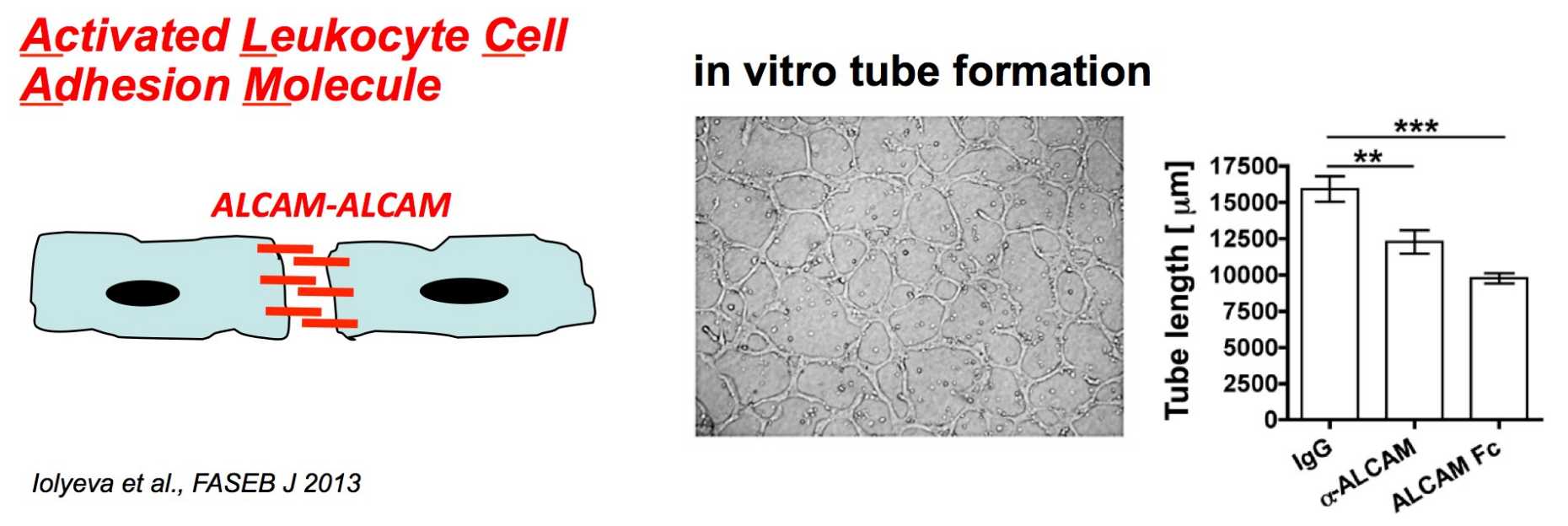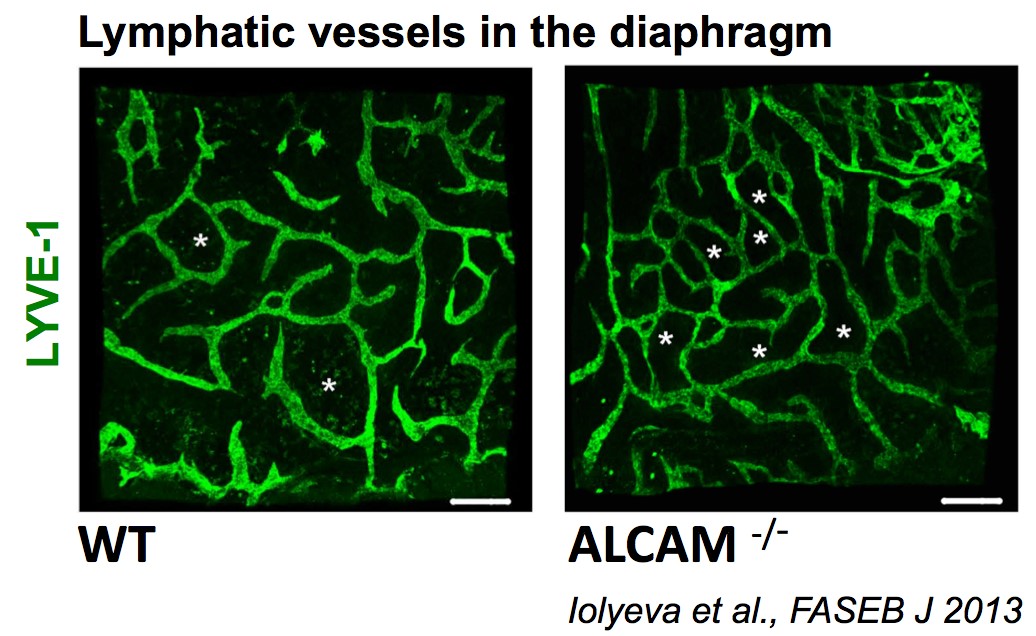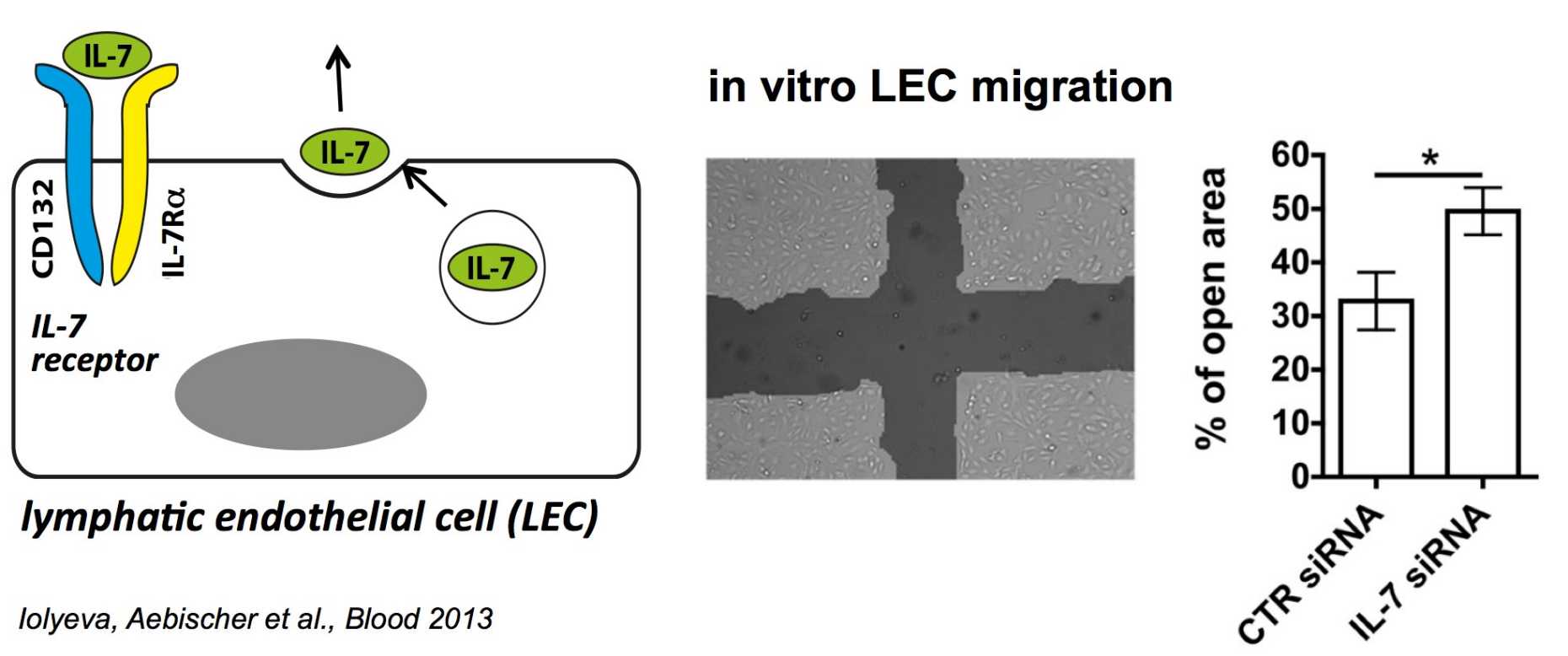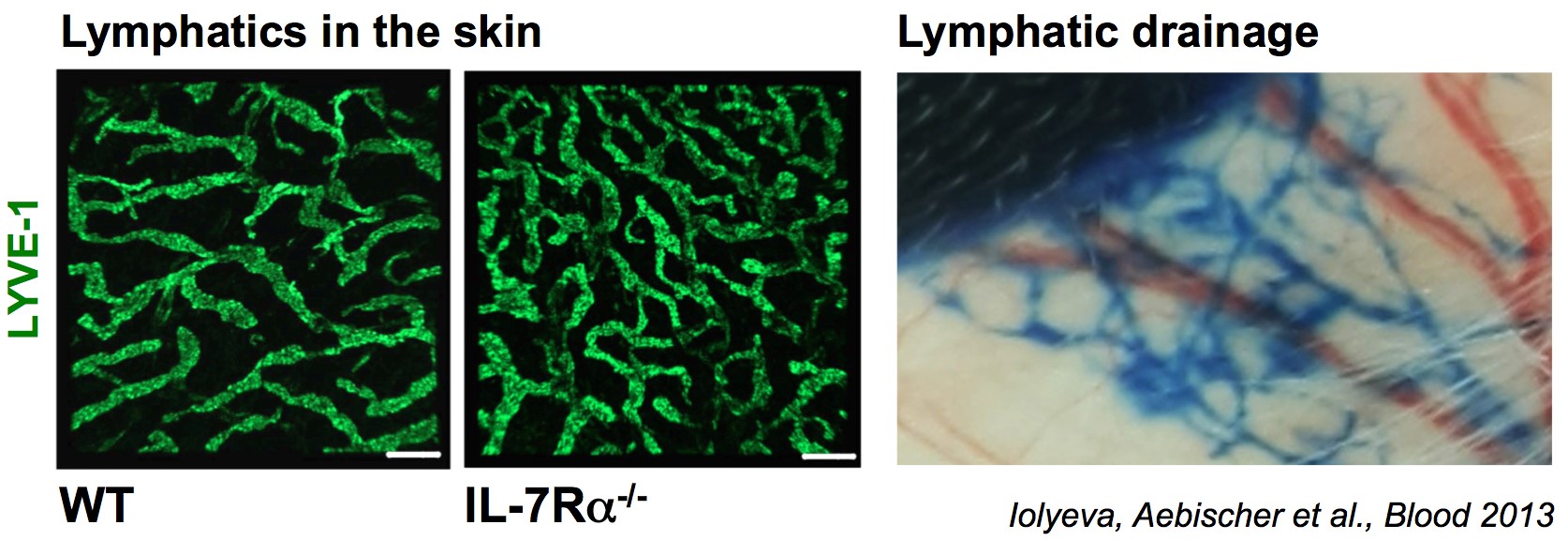Modulators of lymphangiogenesis and lymphatic drainage
Activated leukocyte cell adhesion molecule (ALCAM)
We have identified a previously unknown role for ALCAM in mediating the organization and function of the lymphatic network in vivo (external pageIolyeva et al., FASEB J 2013 =>call_made)
We could show that ALCAM is expressed by lymphatic endothelial cells and contributes to in vitro adhesion, migration tube formation and DC transmigration across lymphatic endothelial cell monolayers. Moreover, the lymphatic network in ALCAM-deficient mice displayed an abnormal organization and function. Our ongoing studies aim to further characterize the expression of ALCAM in blood vessels and to investigate whether ALCAM could be a suitable therapeutic target for blocking (lymph)angiogenesis.
Interleukin-7 (IL-7)
In another project we have identified a previously unknown role for IL-7 in lymphangiogenesis and in lymphatic drainage in vivo
(Iolyeva, Aebischer et al., external pageBlood 2013 =>call_made and News Feature in ETH Life =>)
Specifically, we found that lymphatic endothelial cells express both IL-7 and the IL-7 receptor chains and that IL-7 induces lymphangiogenesis in vitro and in vivo.
Moreover, the lymphatic network was abnormally organized and lymphatic drainage was compromised in IL-7Rα-deficient mice, whereas transgenic overexpression of IL-7 resulted in an expanded dermal lymphatic network with increased drainage function. Our experiments further revealed that treatment with recombinant IL-7 was capable of stimulating lymphatic drainage in mice. We are currently investigating the exact molecule mechanisms(s) by which IL-7 enhances drainage and are exploring the therapeutic implications of these findings.




